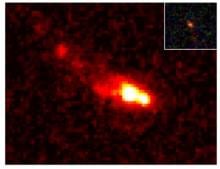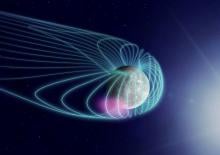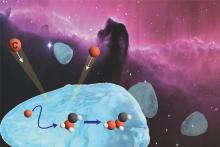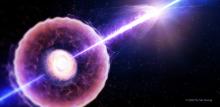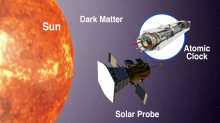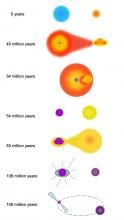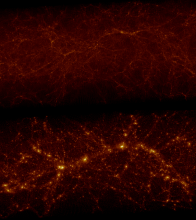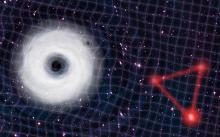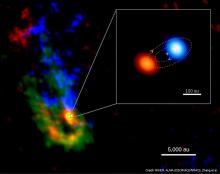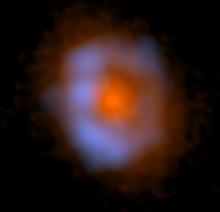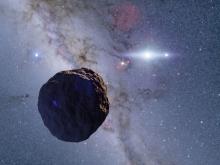Nature Astronomy
News
13 Mar 2024
An international research team have made unprecedentedly detailed observations of the earliest merger of galaxies ever witnessed. They suggest stars developed much faster and more efficiently than we thought. They used the James Webb Space Telescope (JWST) to observe the massive object as it was 510 million years after the Big Bang – i.e. around 13 billion years ago.
29 Sep 2023
Observations during two flybys by the Mio spacecraft as part of the BepiColombo International Mercury Exploration Project have revealed that chorus waves occur quite locally in the dawn sector of Mercury. Mercury's magnetic field is about 1% of that of Earth, and it was unclear whether chorus waves would be generated like on Earth. The present study reveals that the chorus waves are the driving source of Mercury’s X-ray auroras, whose mechanism was not understood.
14 Sep 2023
Lab-based studies reveal how carbon atoms diffuse on the surface of interstellar ice grains to form complex organic compounds, crucial to reveal the chemical complexity in the universe.
19 Dec 2022
When stars die out, they emit gamma-ray bursts. Although scientist can calculate the explosion energy from dying stars, it is difficult to do when the conversion efficiency is low or unknown. Using light polarization, a research group has found a workaround for this, enabling astronomers to calculate the hidden energy of gamma-ray bursts.
05 Dec 2022
Studying an atomic clock on-board a spacecraft inside the orbit of Mercury and very near to the Sun could be the trick to uncovering the nature of dark matter.
29 Nov 2022
Kavli IPMU's Jia Liu is part of team which found the number of astronomy research papers being produced increased during the COVID-19 pandemic, but the number of new or junior researchers entering the field has dropped, and no single country's female astronomers were able to be more productive than their male colleagues on average.
06 Sep 2022
Researchers have used giant lobes of gamma radiation to find that a small satellite galaxy of the Milky Way filled with dark matter, but whose emissions are more likely the result of millisecond pulsars blasting out cosmic particles.
13 Jun 2022
An international team of researchers, including former Kavli IPMU Project Researcher Oscar Macias (currently at the University of Amsterdam), have found that old and fast spinning neutron stars called millisecond pulsars could be responsible for an unexplained signal from the center of our Milky Way.
06 Jun 2022
Researchers have created time machine-like simulations recreate the full life cycle of some of the largest collections of galaxies observed in the distant universe 11 billion years ago.

20 Dec 2021
An analysis of the first material brought back to Earth from a carbon-rich asteroid — Ryugu — is presented in two papers published in Nature Astronomy. Carbon-rich asteroids can provide clues about the early history of the Solar System and on the formation of organic and hydrated minerals — the building blocks of life.
26 Apr 2019
An international team of researchers has discovered a novel method that might verify the existence of a new hypothetical type of particle, namely ultralight bosons, by using observation of the gravitational waves emitted by a smaller black hole orbiting a larger black hole.

02 Apr 2019
An international team has found evidence dark matter may not be made of tiny black holes.
28 Mar 2019
Astronomers have found a molecular cloud that is collapsing to form two massive protostars that will eventually become a binary star system. This observations show that binary stars form together.
05 Feb 2019
Astronomers using ALMA have detected various complex organic molecules around the young star V883 Ori. A sudden outburst from this star is releasing molecules from the icy compounds in the planet forming disk.
29 Jan 2019
For the first time ever, astronomers have detected a 1.3 km radius body at the edge of the Solar System. Kilometer sized bodies like the one discovered have been predicted to exist for more than 70 years. These objects acted as an important step in the planet formation process between small initial amalgamations of dust and ice and the planets.
Events
Sorry, no events coming up for this topic.
Researchers
Sorry, no researchers coming up for this topic.
Giants in history
Sorry, no researchers coming up for this topic.


